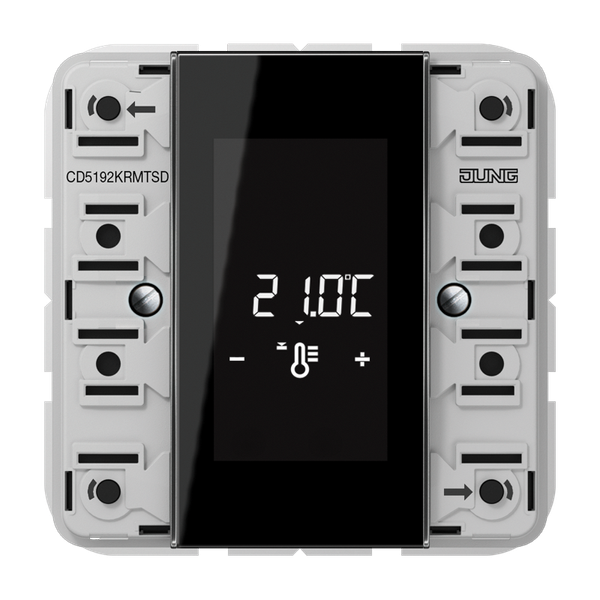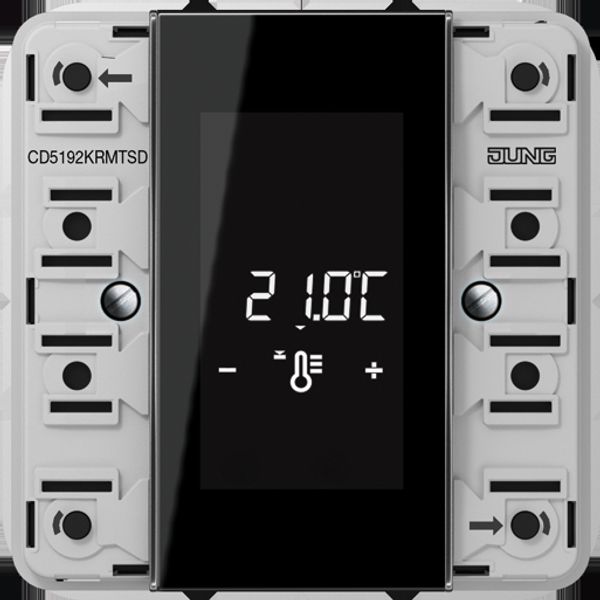Register to unlock your exclusive B2B prices and start shopping. Sign up now!
KNX room-controller CD5192KRMTSD
Order only
Price (excl. VAT):
242,88 €
EAN: 4011377121645
MPN: CD5192KRMTSD
Box: 1
Estimate delivery time at our warehouse (approx.):
4-6 weeks
Technical Information
| Item condition | New |
| Manufacture name | KNX room-controller CD5192KRMTSD |
| Brand | Jung |
| Categories |
Bus System Devices (KNX/Modbus)
|
| Country of origin | DE |
| Harmonized System Code | 8537 1098 00 |
| With display | Yes |
| With temperature controller | No |
| With bus connection | Yes |
| Manual set point setting | Yes |
| Status-LED | Yes |
| Number of actuation points | 4 |
Packing details
| Packing level 1 | 4011377121645 |
| Packing level 2 | 4011377121645 |
Other Technical data
| Mounting method | Flush mounted (plaster) |
| With time switch clock | No |
| Bus system KNX | Yes |
| Bus system radio frequent | No |
| Bus system Powernet | No |
| Material | Plastic |
| Width in number of modular spacings | 0 |
| Bus system LON | No |
| With integrated DCF77 receiver | No |
| With anti-theft/dismantling protection | No |
| IR sensor | No |
| Presence button | No |
| RAL-number (similar) | 0 |
| Central functional unit for senders/actuators | No |
| Transparent | No |
| Bus system KNX radio | No |
| Radio frequent bidirectional | No |
| Min. depth of built-in installation box | 0 mm |
Downloads
Description
KNX room-controller CD5192KRMTSD manages communication and control within power systems, enabling functional synchronization with KNX bus connections for integrated automation tasks.Equipped with a display for status monitoring and manual set point adjustments, it offers interaction within advanced control networks. Mounting method:Flush mounted (plaster).Main material defined as plastic.Controller includes 4 actuation points supporting specific command inputs.KNX-compatible device architecture integrates directly into wired system protocols;unsuitable for radio frequencies or alternative bus systems like Powernet/LON/KNX radio.Transparent interface absent;opaque housing design confirmed in deployment specs.Display integrated visibly, LED status indicator functional onboard unit linked to operational diagnostics/troubleshooting modes outputs deployment-ready configurations via manual intervention usability paths.
Follow-up

Order only
Jung
KNX room-controller
288,11 €
EAN: 4011377322592
MPN: CD5292D1ST
Package: 1
Accessories
4011377991231




